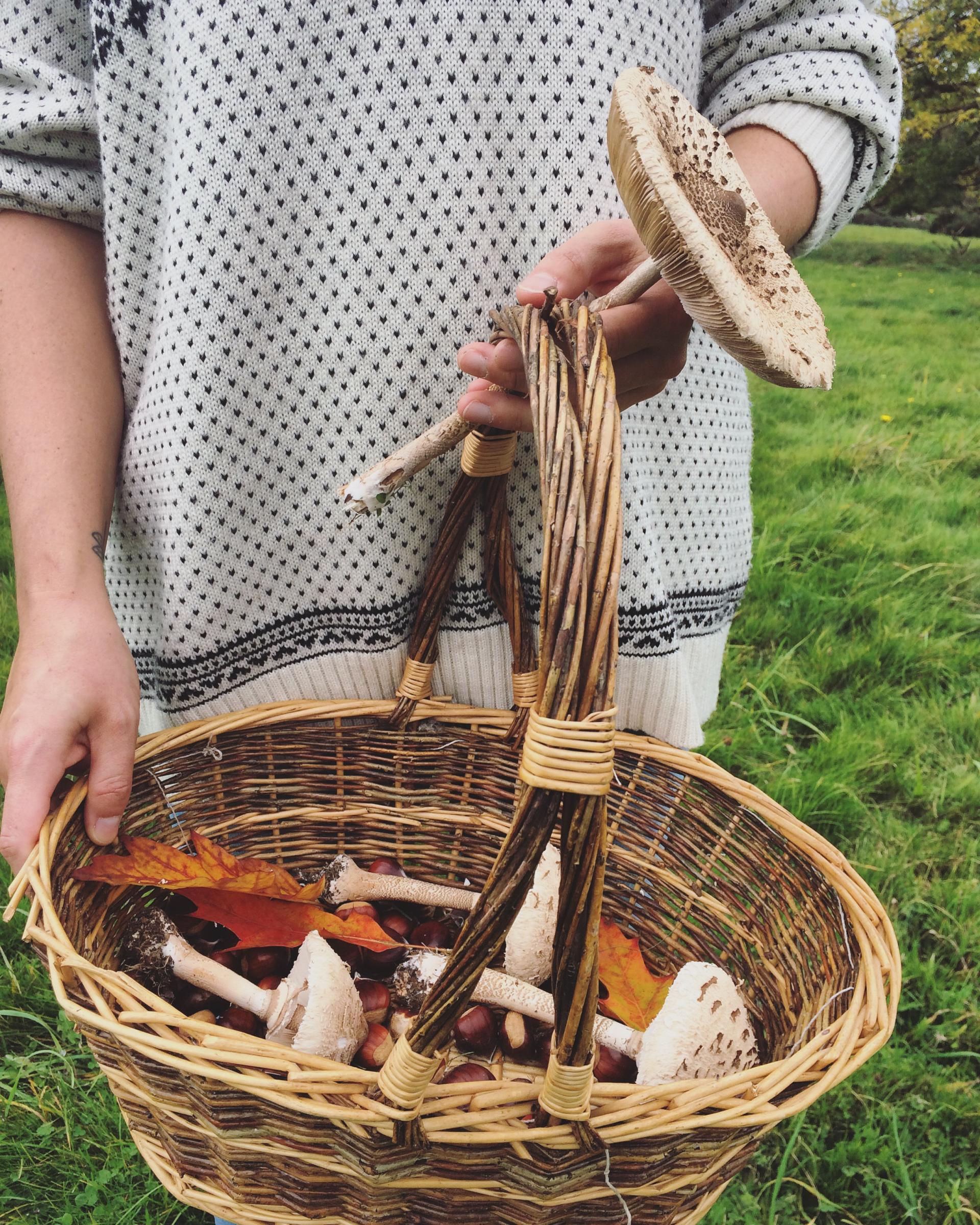The countryside is full of edible goodies all year round – you just have to know how to seek them out. My favourite autumn finds are perfect for beginner foragers.

Foraging in autumn
Nettles: Found almost everywhere in Britain all year round, nettles are high in vitamins and minerals and make a surprisingly tasty soup (try my easy nettle soup recipe) or served like spinach, sprinkled with parmesan. They’re very easy to identify, too, making them an easy beginner forage. Wear gloves, pick only young, healthy plants and boil in water to get rid of the sting.
Seeds: Any collected from the mustard family – such as shepherds purse, garlic mustard and horseradish – can be used as home-grown pepper to add a subtle kick to dishes. Fennel and dill seeds are sweet and aromatic, and when dried work well with fish.
Acorns: Wild food gourmets swear by acorns. They’re an acquired taste when raw, as they are high in tannin, but they can be crushed into a flour that’s perfect for adding a nutty taste when making muffins or bread. Follow this recipe to make acorn flour.
Mushrooms: Now is the perfect time to collect the fungi that are popping their heads up into leaf-strewn fields. There are some delicious specimens to be found in our woodlands, including cep, giant puffballs, field mushrooms and wood blewitt (this list of British mushrooms includes photos). But exercise caution and take a guidebook or better, an expert guide, as some common mushrooms as easily confused with poisonous varieties. When you’ve identified safe specimens try them coated in breadcrumbs or dried and used in risotto.
Hazelnuts: You’ll spot hazelnuts on on the ground beneath the small trees or bushes they have grown on, and if they are recent windfalls they are likely to be good for eating. Delicious baked in cakes, used to make nougat or ground and made into hazelnut spread.
Sweet chestnuts: Not to be mistaken with horse chestnuts (conkers), which are not edible – the difference is that sweet chestnuts grow in spiky cases. Chestnuts are good eaten raw, baked, roasted (with a small slit in them to avoid explosions) or made into puree.
Elderberries: These juicy black berries that are often so plentiful they weigh down their branches and beg to be picked. Elderberries can be combined with blackberries in jellies and jams and are excellent added to apple pie or used to make a potent liquor.
Blackberries: Ripest in September and October and extremely easy to find and identify – a lovely forage with children. Their high sugar content makes them ideal for making homemade wine and cordials as well as pies, crumbles, puddings, jams and jellies.
Rosehips: Rosehips are abundant in British hedgerows in autumn and early winter, and are easily recognisable – fat, bright red buds with spiky black ends. They are a bit of a wonder food – high in vitamins C, A and B and rich in antioxidants, they are used to make syrups, jams, jellies, even bread and pies. If you’re a bit of a beginner in the foraging stakes, start off with my healthy and delicious rosehip tea recipe, which is fantastic for beating winter colds.
Crab Apples: This small tree is the ancestor of all cultivated varieties of apple, and although crab apples can be rather sharp and unpalatable raw they make brilliant jams and ciders.
Sloes: Again too acidic to eat but perfect for making a no-fuss sloe gin by simply adding fresh, washed sloes and sugar to gin and letting sit – a fun foraged Christmas present.
Hops: Found in hedgerows and clambering up small trees, fences and poles. Hops are ready to pick by mid-September and as well as being a main ingredient for making homemade beer, they can be dried and used to stuff a herbal pillow to help in getting a good night’s sleep.
love it